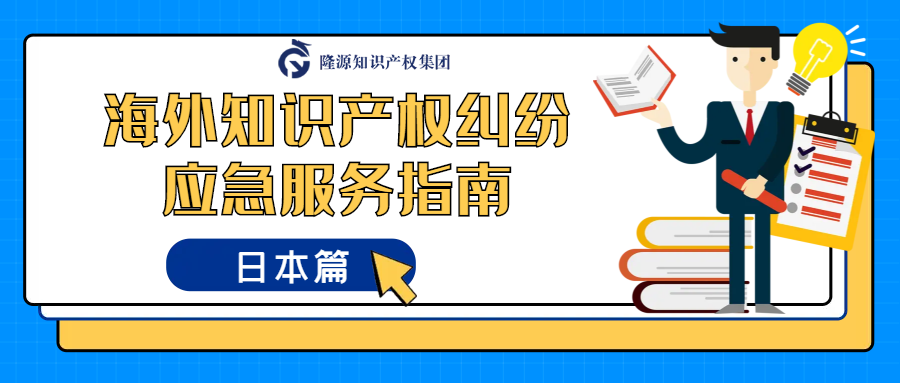The main laws and regulations related to intellectual property protection
in Japan include Patent Law, Utility Model Law, Trademark Law, Design Law,
Copyright Law, Anti unfair Competition Law, etc.
The ways of intellectual property protection in Japan include judicial
protection, injunction procedure, customs protection, tort litigation, etc.

Japanese Intellectual Property Protection Agency
The Japanese Concession Office under the Ministry of Economy, Industry and
Technology is responsible for the examination of inventions, utility models and
designs, as well as the registration of trademarks;
The Department of Culture under the Ministry of Education, Culture and
Culture is responsible for the management of copyright and computer
software;
The Ministry of Agriculture and Fisheries shall be responsible for the
examination and registration of new plant varieties and the implementation of
the Seed and Seedling Law;
The Semiconductor Circuit Registration Department of the Software
Information Center is responsible for the registration of integrated
circuits.
Japanese Intellectual Property Protection Judicial Institution
Japan has exclusive jurisdiction over intellectual property litigation. The
trial of highly technical cases is under the jurisdiction of the Tokyo District
Court and the Osaka District Court. In Tokyo, there is also the High Court of
Intellectual Property, which is mainly responsible for the second instance of
intellectual property civil cases and administrative cases against the decisions
of the Concession Office.
How to deal with intellectual property risks in Japan
Requested prohibition
In Japan, the patentee or exclusive licensee can apply to the district
court for injunction to stop patent infringement. The injunction to stop patent
infringement includes pre litigation injunction and permanent injunction.
Prelitigation injunction is an independent procedure, separated from normal
patent litigation. The petitioner needs to prove the following when applying for
the pre litigation injunction:
First, patent infringement occurs; Second, the pre litigation injunction is
necessary, that is, there is irreparable damage. Before issuing a pre suit
injunction, the court usually requires the patentee to provide security.
To apply for a permanent injunction, two conditions must be met:
First, the infringement continues to occur; Second, infringement is likely
to occur. Japanese courts usually issue permanent injunctions automatically when
they determine the existence of infringement.
A permanent injunction may be directed against ongoing or imminent
infringements. After receiving the injunction, if the infringer believes that
there is no infringement, he can appeal to the Intellectual Property High Court
for the permanent injunction.
Litigation compensation loss
Article 102 of the Patent Law of Japan stipulates that the damages claimed
by the patentee or the exclusive licensee against the infringement include loss
of profits, reasonable licensing fees or the illegal benefits obtained by the
infringer from the infringement.
The Japanese court generally compensates the patentee's loss with a
reasonable licensing fee. A professional organization may also be entrusted to
calculate the compensation for damages upon the request of the parties. In
Japan, punitive damages are usually not used for patent infringement.
If the enterprise is required to compensate for damages, it must also be
based on infringement. If it believes that it has no infringement, it should
actively respond to the lawsuit and make a reasonable defense.
Response to other rights protection measures
Paragraph 2, Article 100 of the Japanese Patent Law stipulates that the
patentee or the exclusive licensee may require the destruction of the infringing
product and the tools used to produce the infringing product.
Article 106 of the Japanese Patent Law stipulates that the patentee may
require the infringer to take some measures to restore its business
reputation.
Japan has independent criminal law norms of charges and statutory
punishment in the laws and regulations for the protection of intellectual
property rights, and can simultaneously apply two penalties of imprisonment or
fine to infringers. If there is indeed an infringement of the intellectual
property rights of the obligee, it should be avoided to be identified as
intentional infringement and thus subject to criminal punishment.
Consideration of whether to respond to the lawsuit
If it is difficult for the lawsuit to have a good result after
comprehensively measuring the factors such as the probability of winning the
lawsuit, the market prospect, and the litigation cost, or the market prospect
involved is not good, you should give up responding to the lawsuit and stop the
manufacturing, export, and sales of the infringing products.
If the market share is high, the future development prospects are good, and
the other party's evidence of infringement litigation is not convincing, the
party can actively respond to the lawsuit.
If both parties have their own intellectual property rights, litigation can
be avoided through cross licensing, that is, both parties reach a
settlement.
Of course, reaching a settlement requires full research and accurate
judgment, and active communication and negotiation. In the case that litigation
results cannot be obtained in a short period of time and the future development
of the market is full of uncertainties, reconciliation between the two parties
is an economical and efficient way to deal with disputes.